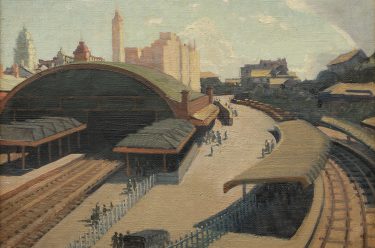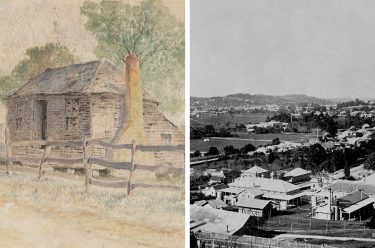On display in the Queensland Art Gallery’s Australian Art Collection, Josephine Ulrick and Win Schubert Galleries (10-13) Brisbane townscape 1928 (illustrated) by William Bustard (1894-1973) depicts a growing city in a construction boom establishing itself as a state capital. We look over rooftops toward Queen Street from Edward Street, to the City Hall clock tower under construction, and on to Mount Coot-tha in the distance. Bustard employed this high vantage point in many of his deceptions of the city giving him a different perspective on the world.
The scene could have been painted from the three-storey Australian Mutual Provident (AMP) Society building (illustrated), but most likely from the large windows of the six-storey Country Press Chambers building behind (illustrated). Besides the City Hall, the view also captures the Tattersalls Club, its distinctive features in the foreground, past the drapers, Thomas Finney and James Isles Queen Street building, with Ascot Chambers — Brisbane’s first steel-framed skyscraper opened just two years before — framing the view on the right.
The focus of the painting is on the rooftops and the concentration of the multi-storied buildings, but more distinctly the cranes and the skeletal unfinished spire of the City Hall clock tower giving the impression of a city in development. A billowing cloud of smoke in the distance reinforces the sense of activity and drama.
In Brisbane townscape Bustard renders the buildings in simplified blocks of pigment, depicting the light and shadow in broad bands of colour. This simplified decorative style was the face of Modernism in Brisbane at this time.
William Bustard at his first solo exhibition 1931
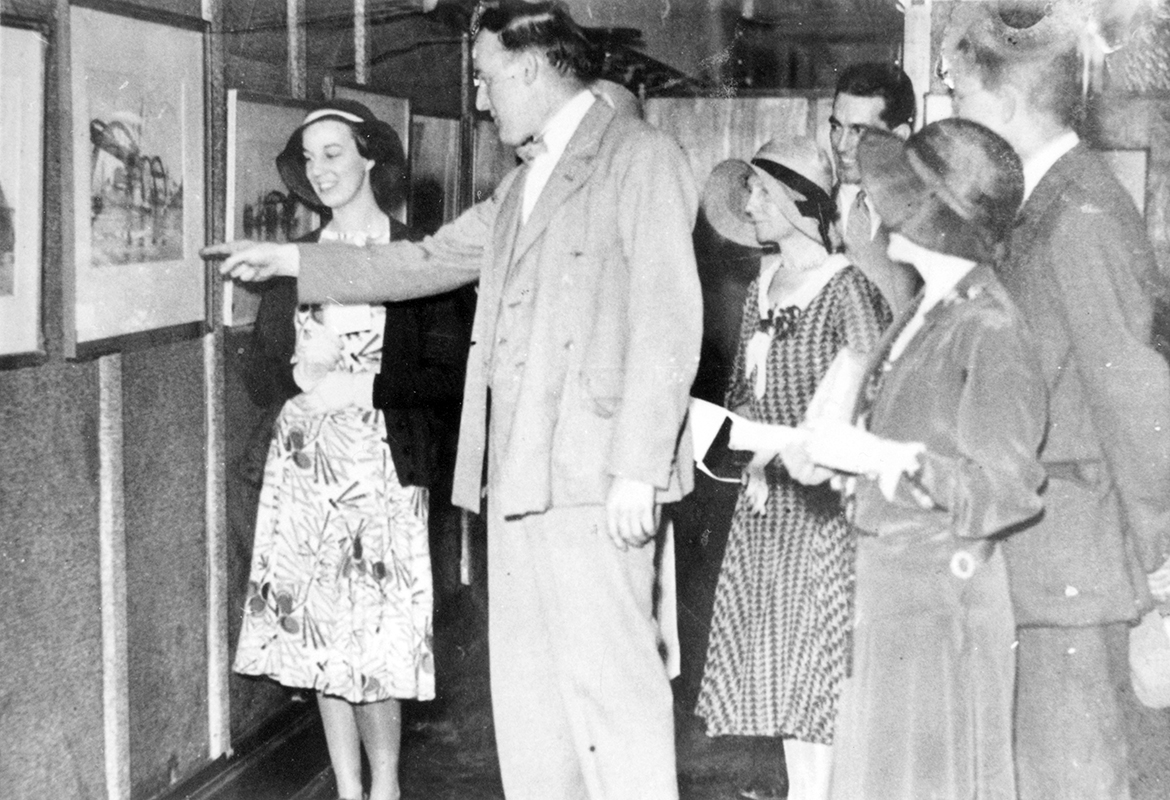
Bustard was an important figure in the development of art in Queensland from the 1920s to the 1960s, and a founding member of the Queensland National Art Gallery Board of Trustees and Arts Advisory Committee in 1931. A strong advocate for Queensland artists he led by example extolling the need for local artists to capture the unique Queensland light and landscape with Brisbane townscape a fine example of his early style.
William Bustard ‘Brisbane townscape’ 1928
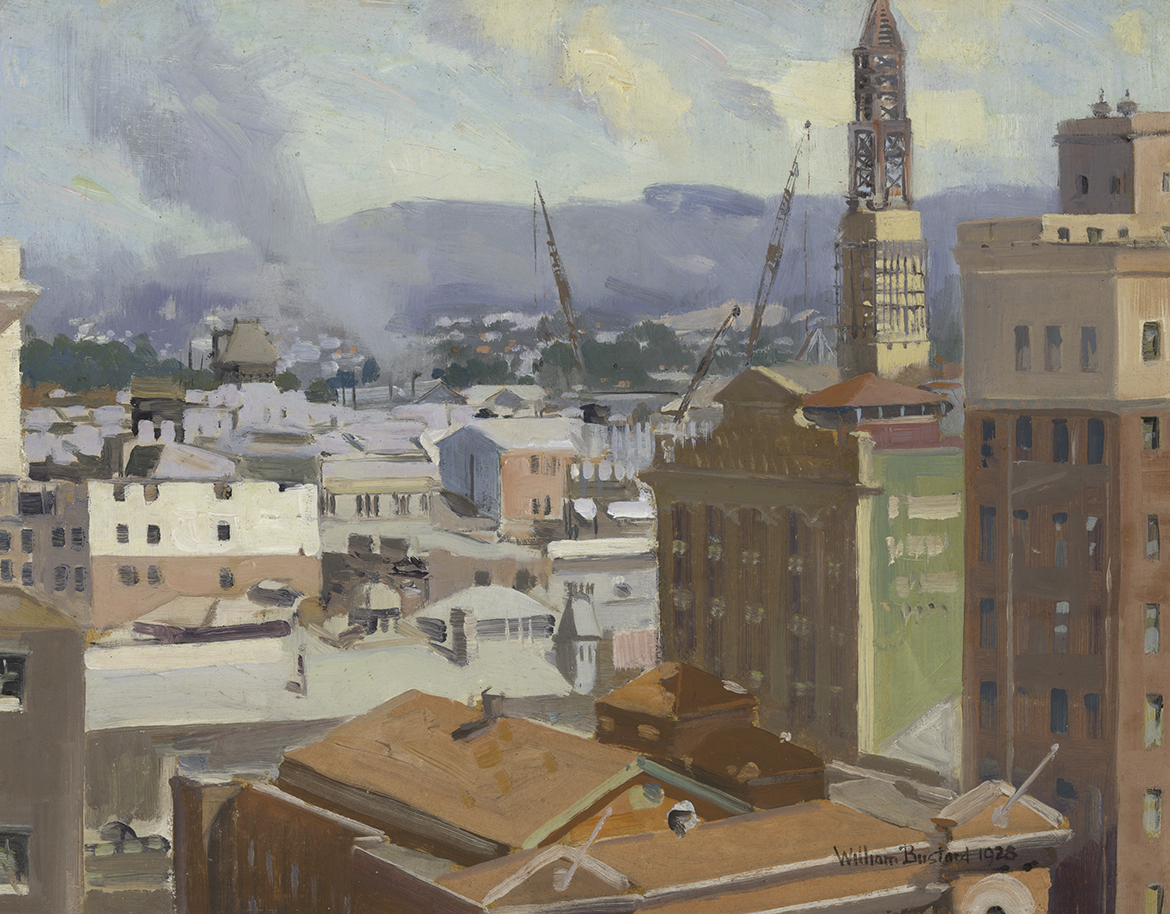
There was intense building activity in Australia’s larger cities like Brisbane during the 1920s and 30s, typified by the construction of buildings such as Brisbane’s City Hall (1920-30), as well as the Grey Street Bridge (1928-32) linking South Brisbane to North Quay, and the Story Bridge (1935-40), linking Kangaroo Point to Petrie Bight, which inspired numerous paintings of the vibrant city.
The building of the City Hall (illustrated) was an even more important focus for civic pride, being the highest structure in Brisbane at the time, and a symbol of the modern city that was completed two years after Bustard made his painting. The Grey Street Bridge (illustrated), which was Brisbane’s second river crossing under construction, may have been the site of one of the cranes and whose operation probably caused the cloud of smoke seen in the distance. The Grey Street Bridge officially opened eleven days after the opening of the Sydney Harbour Bridge (19 March 1932).
View from the City Hall clock tower 1928
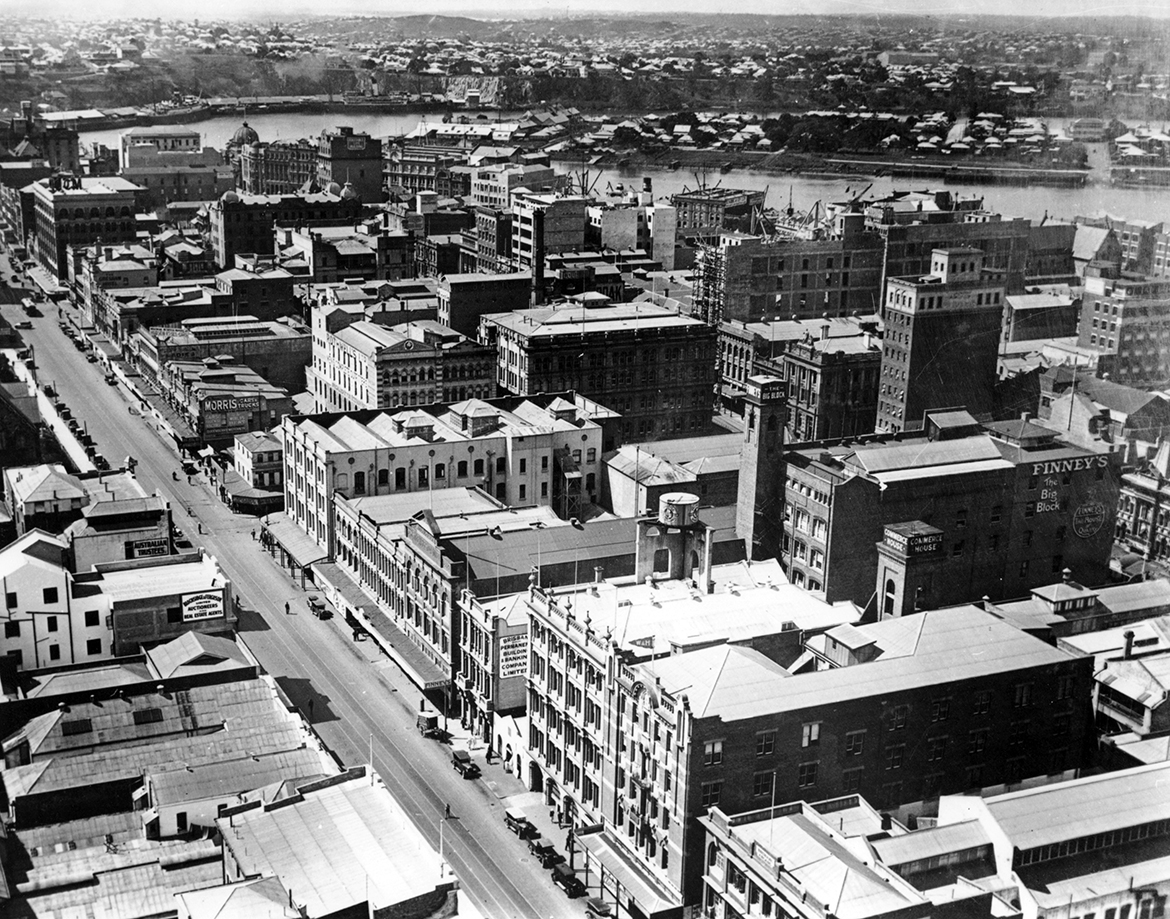
Official opening of City Hall 1930
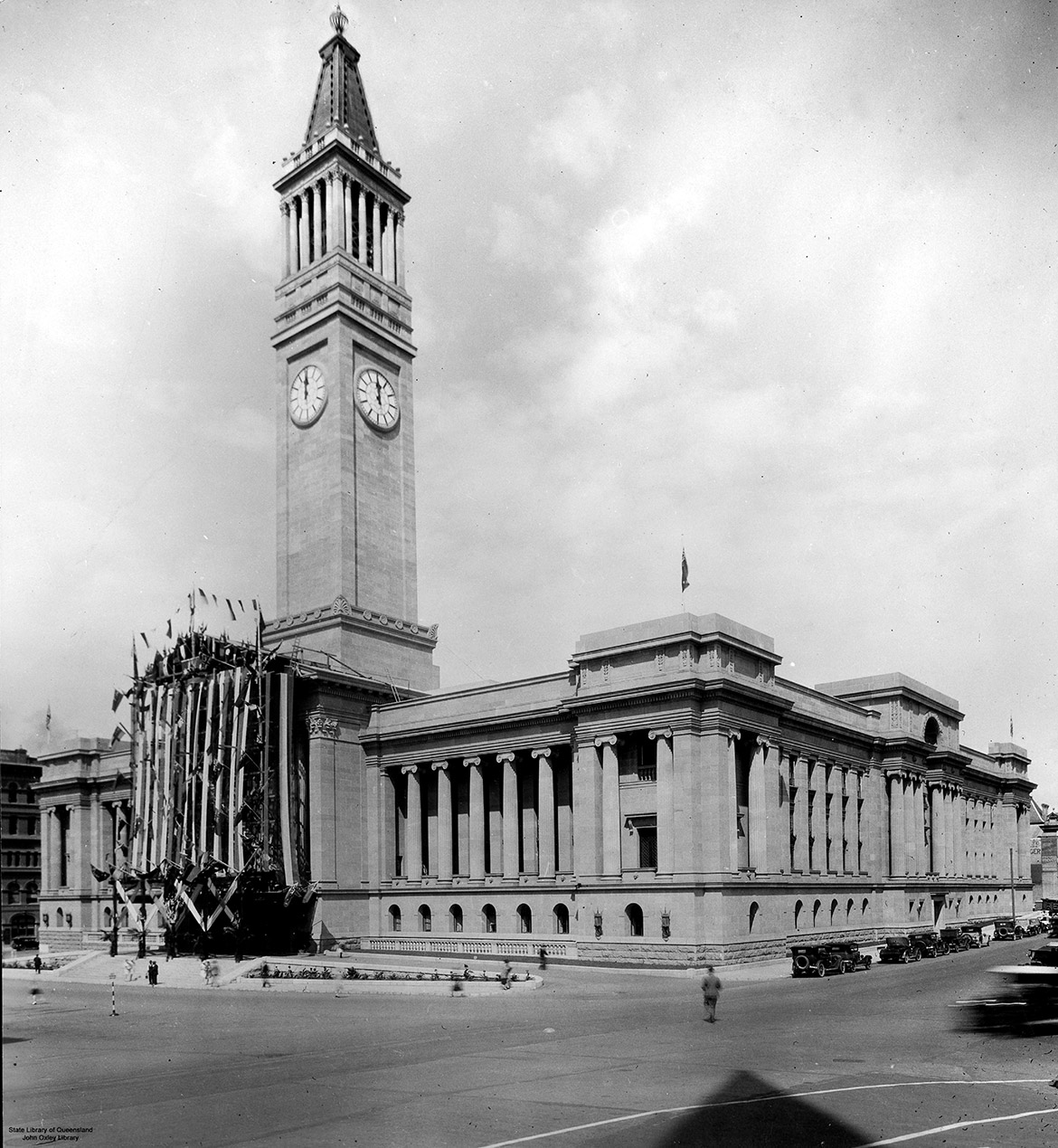
Official opening of Grey Street Bridge 1932
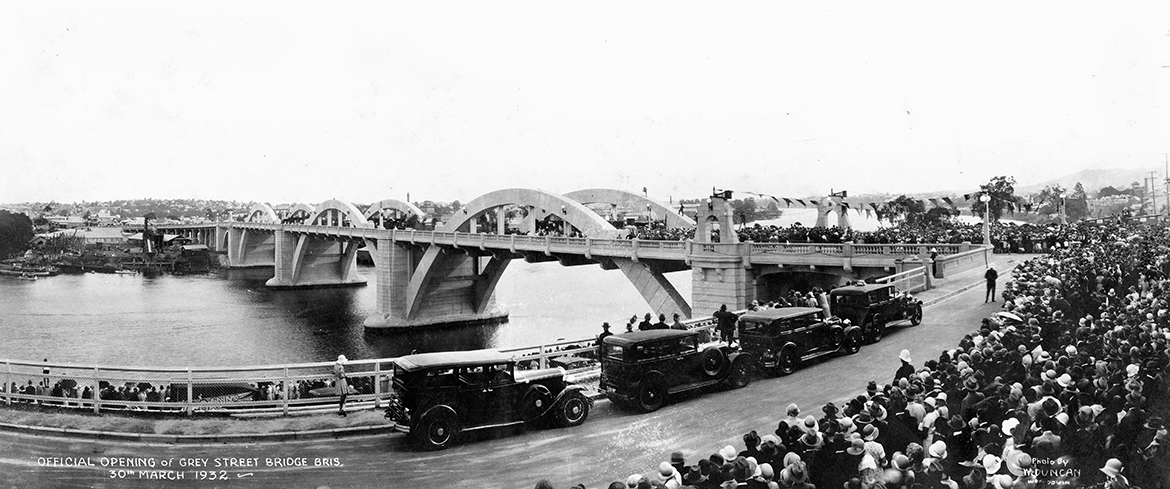
The buildings depicted in ‘Brisbane townscape’
Australian Mutual Provident (AMP) Society
The original three-storey Australian Mutual Provident Society (AMP) building (1885-87) was the company’s Queensland headquarters, situated at 229-239 Queen Street (intersection of Edward Street). The building was demolished by the Society and replaced with a new ten-storey building now known as MacArthur Chambers (1931-34). The building was renamed during the Second World War after General Douglas MacArthur, American Commander in Chief of the Allied Forces for the Pacific Region, who used the building as his headquarters.
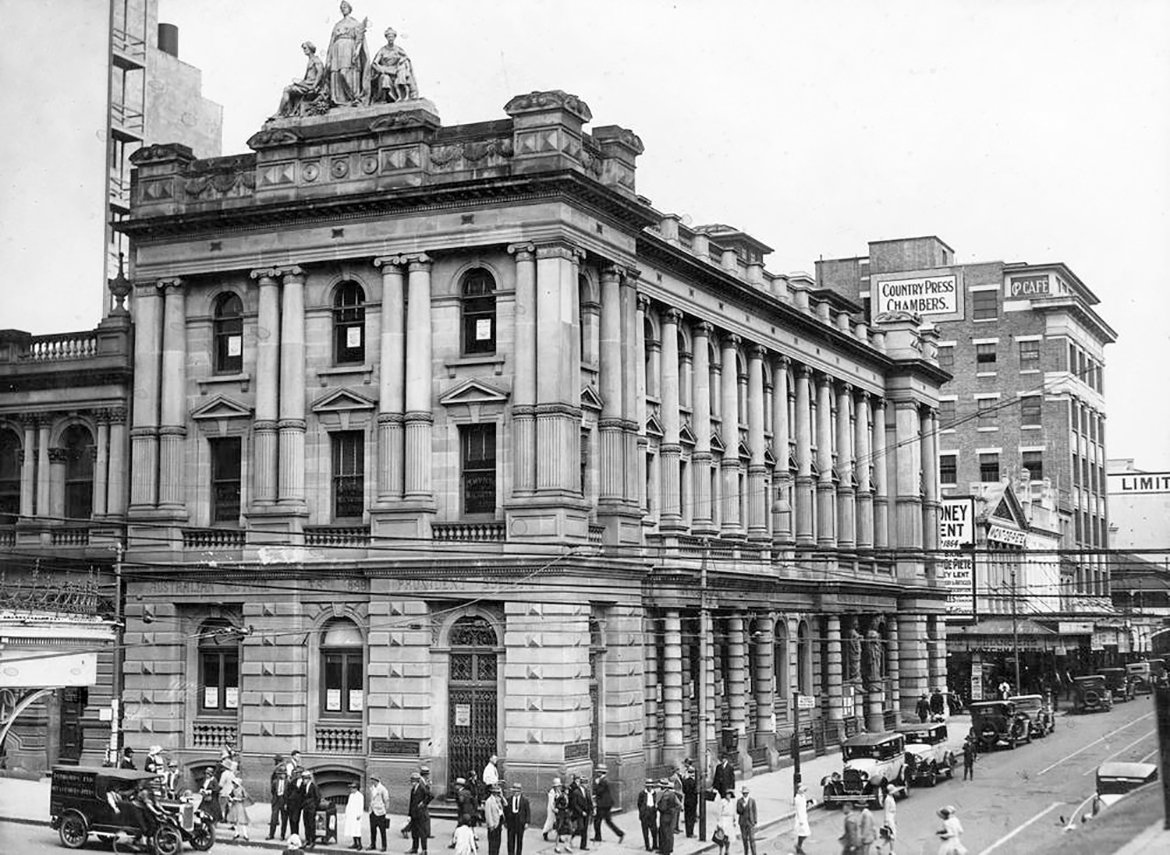
Country Press Chambers
The six-storey office block for the Queensland Country Press Co-operative building (1924-25) was situated at 177 Edward Street on the corner of Elizabeth Street. It sits behind the three-storey Australian Mutual Provident Society (AMP) building and was built the year before the ten-storey Ascot Chambers (1925-26). The Country Press Chambers was subsequently demolished.

Tattersalls Club
The Brisbane Tattersalls Club was founded in 1883 as a sporting club (its name acquired from Tattersalls of London, the Jockey Club founded in 1766). The Club’s new building (1925-26) in Edward Street was opposite the AMP building and just around the corner from Ascot Chambers in Queen Street. Brisbane sculptor Daphne Mayo was commissioned to design a low relief frieze within the Club’s ground floor arcade of shops connecting to Queen Street. The decorative plaster frieze entitled ‘The Horse in Sport’ depicts equine scenes, and is still viewable today.
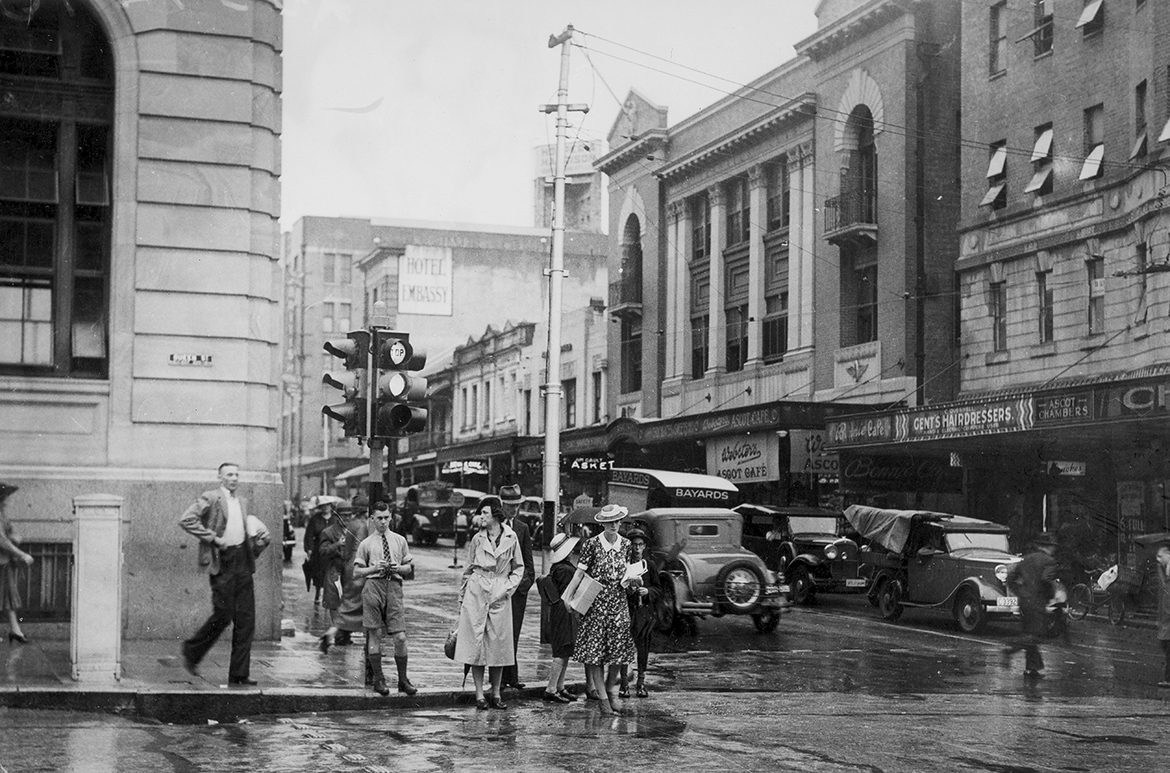
Ascot Chambers
Ascot Chambers (1925-26) was Brisbane’s first steel-framed skyscraper and, during its construction attracted attention as Queensland’s tallest building. The building’s owner changed its original name from Vindex House to reflect his passion for horse racing, and with the building coincidentally being sited beside the Brisbane Tattersalls Club. The ten-storey Chambers was situated at 223-227 Queen Street (at the intersection of Edward Street) and was faced in brick with the second and top levels accented with stone-coloured cement facings. The building was demolished in 1995 to make way for the Tattersall’s Club extension.
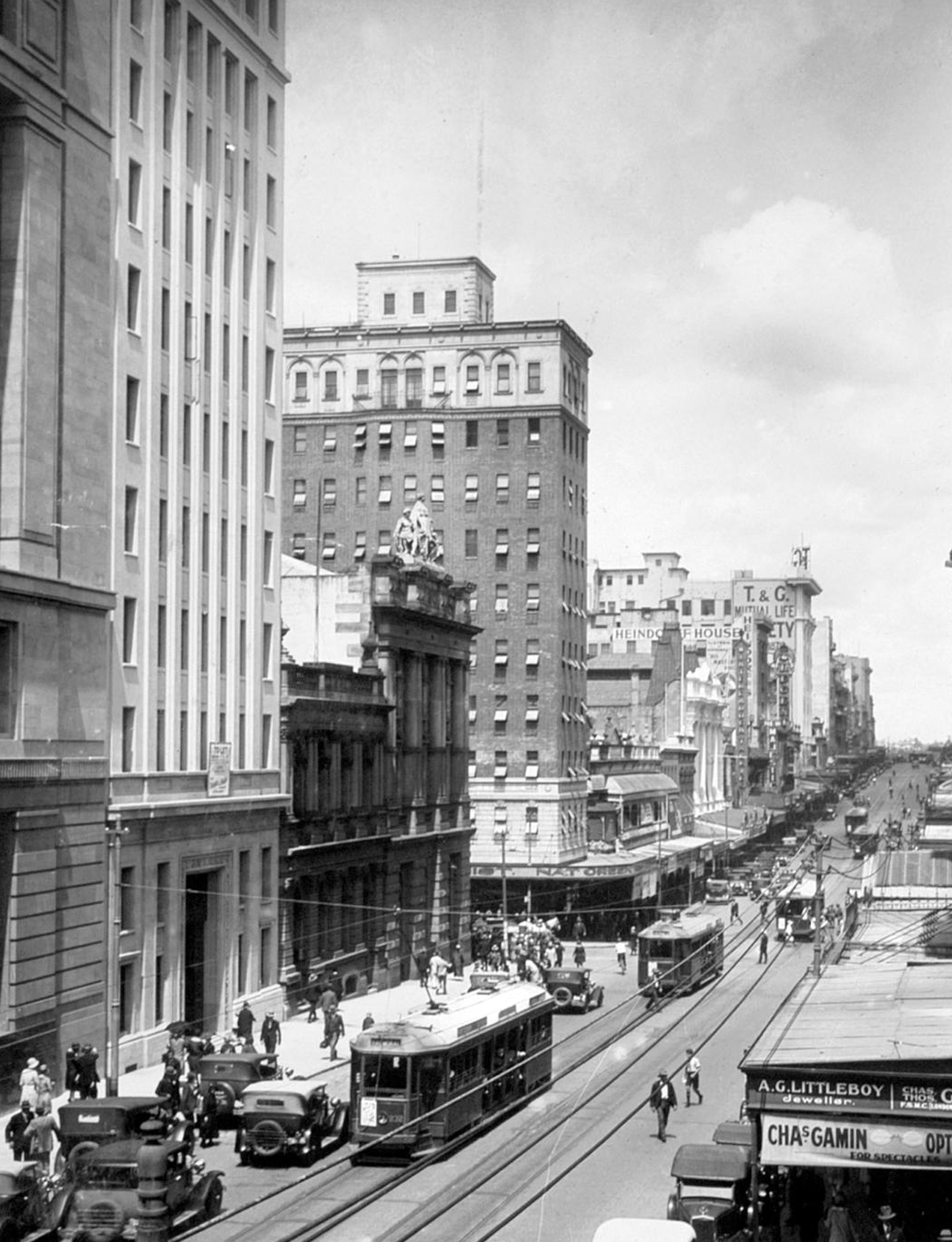
Finney Isles
The drapers, Thomas Finney and James Isles (established in Fortitude Valley in 1864,) were one of the leading retail firms in Brisbane selling clothing, furniture and household items. Over time, they expanded to their five-storey building (1909-10) situated at 188-198 Queen Street. The department store complex ‘The big block’ was built in stages between 1909 and 1936 linking Queen and Adelaide Streets. Both buildings still stand today.
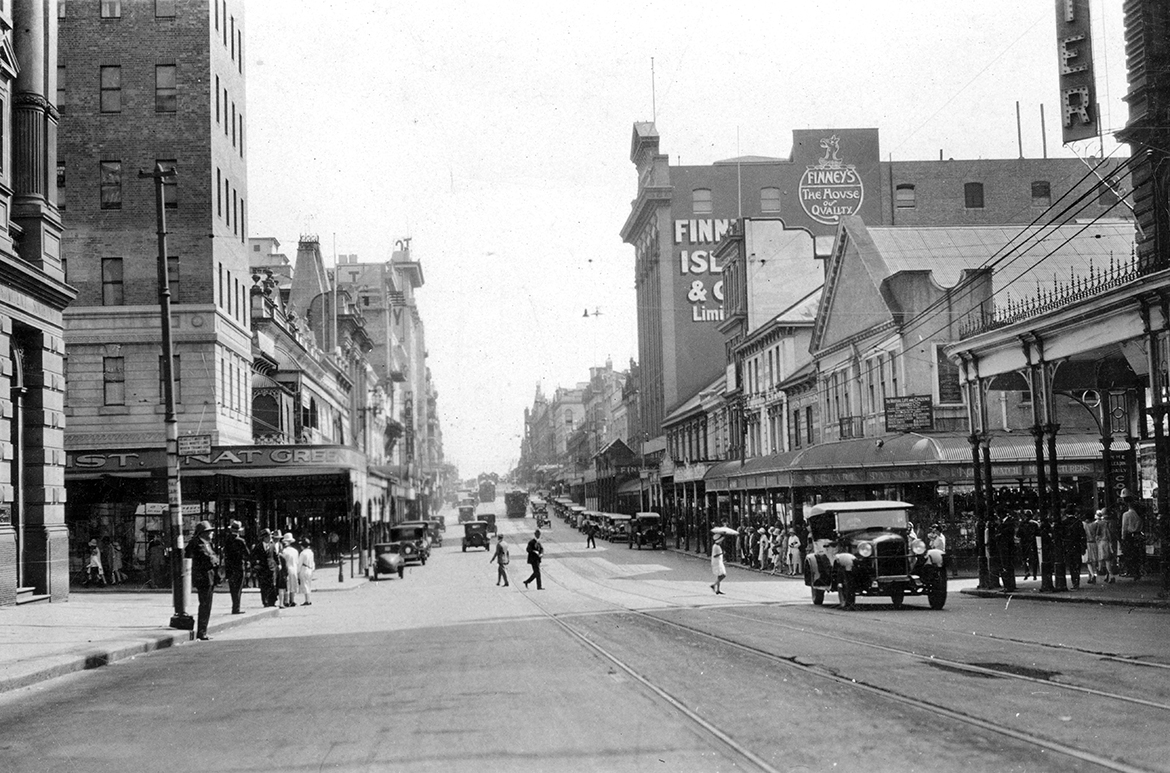
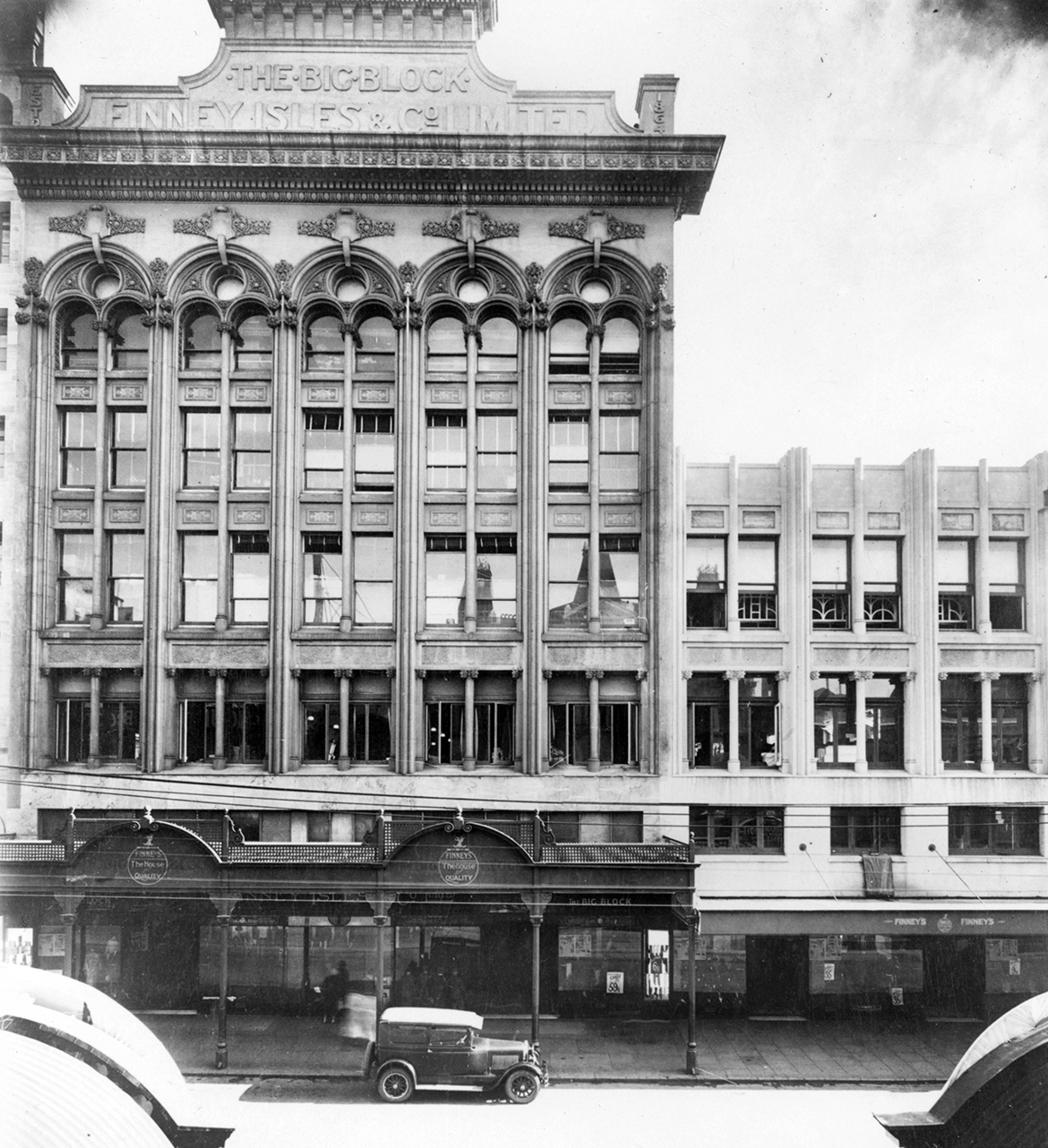
Supreme Court
The distinctive tower of the Brisbane Supreme Court building (1875-79) can be seen among the less distinguished roof tops featured in Brisbane townscape. The Court was built on a site on George and Adelaide Streets with a frontage to the river on North Quay. It was severely damaged by arson in 1968 and its remains were demolished in 1976 to make way for a new Law Courts Complex.
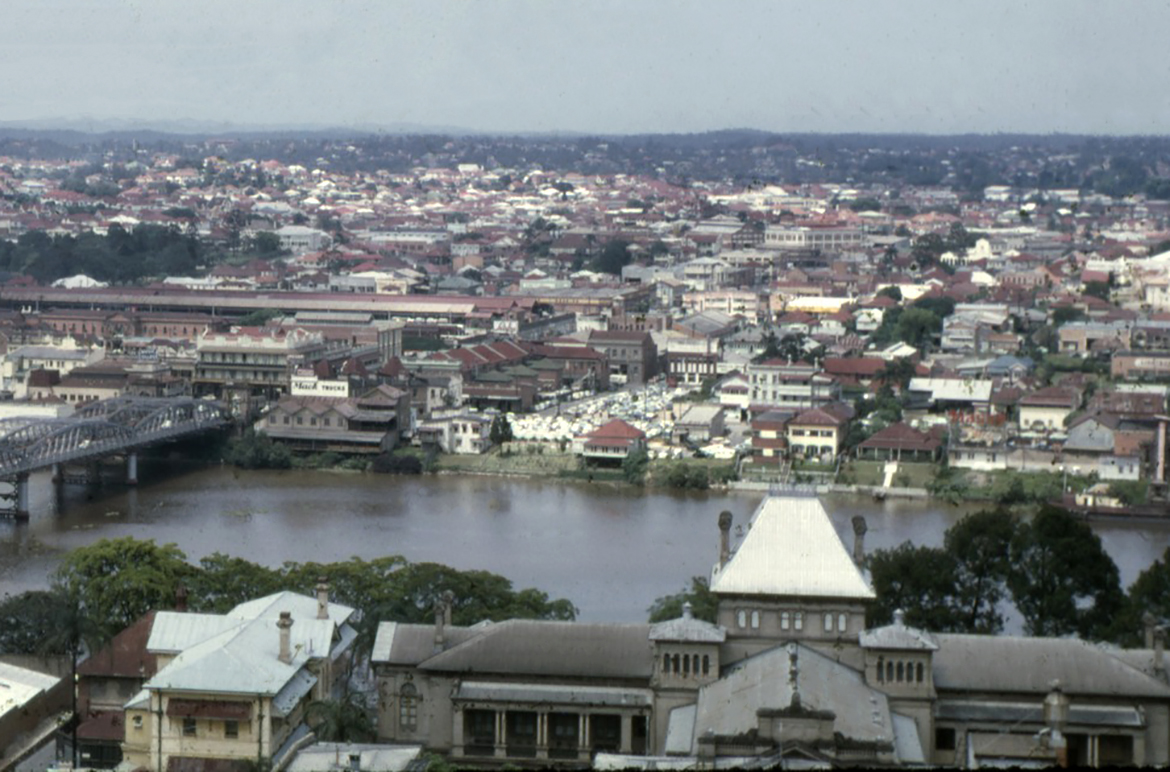
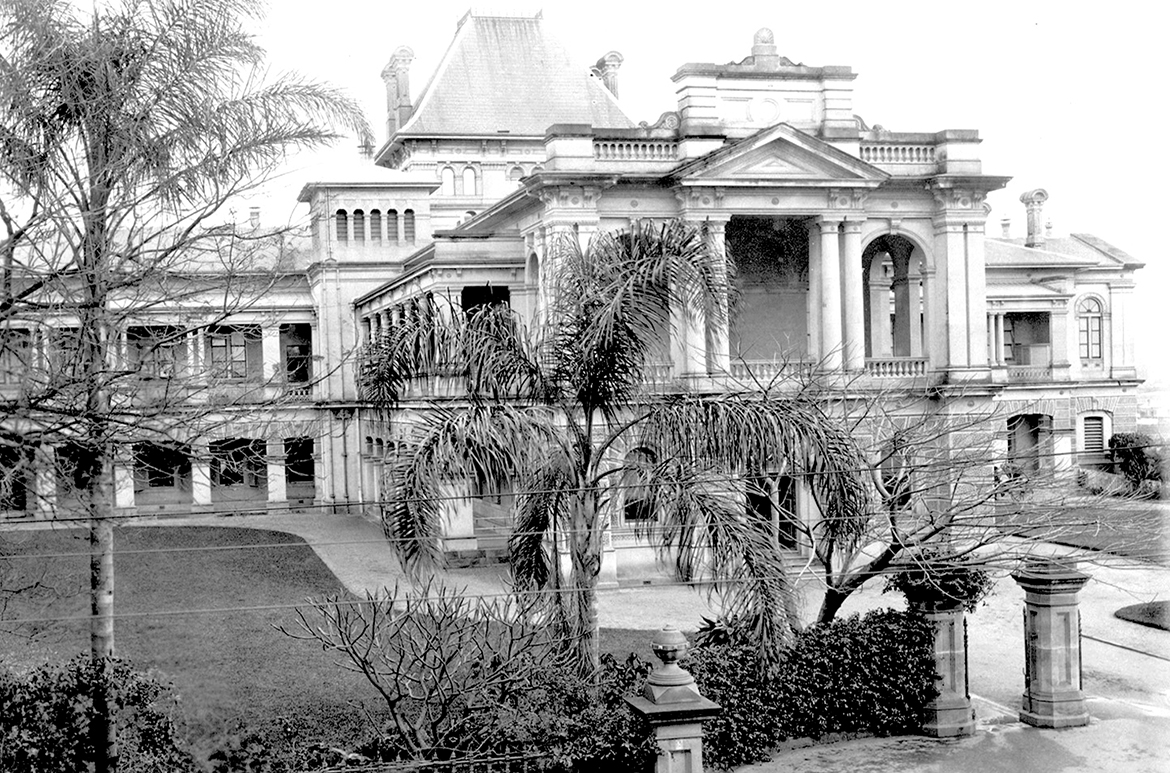
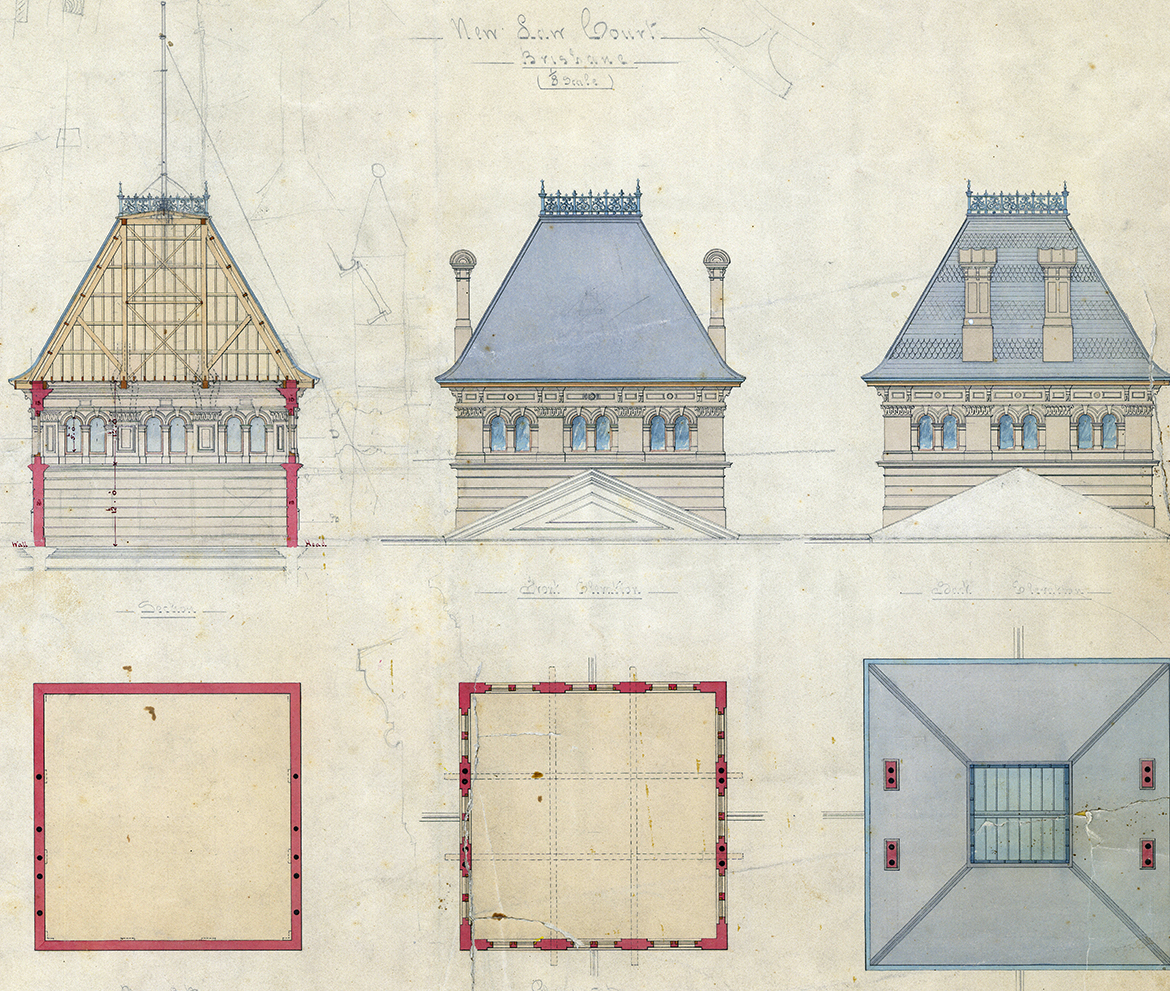
City Hall
The construction of the Brisbane City Hall was the second most expensive activity in Australia after the Sydney Harbour Bridge. Built between 1920 and 1930, the three-storey building’s clock tower, standing at 87.47 metres houses five bells — four bells weighing over three tonnes that chime every 15 minutes and a 4.3 tonne striking bell that marks the hour. Once the tallest building in Brisbane, its four clock faces on each side of the tower were at the time the largest in Australia at 4.8 metres in diameter. Covering two acres, the Brisbane City Hall remains the largest city hall in Australia.
Brisbane sculptor Daphne Mayo was commissioned to carve the Hall’s tympanum relief The progress of civilisation in the State of Queensland, a sculptured pediment that is a major feature of the building’s entrance.
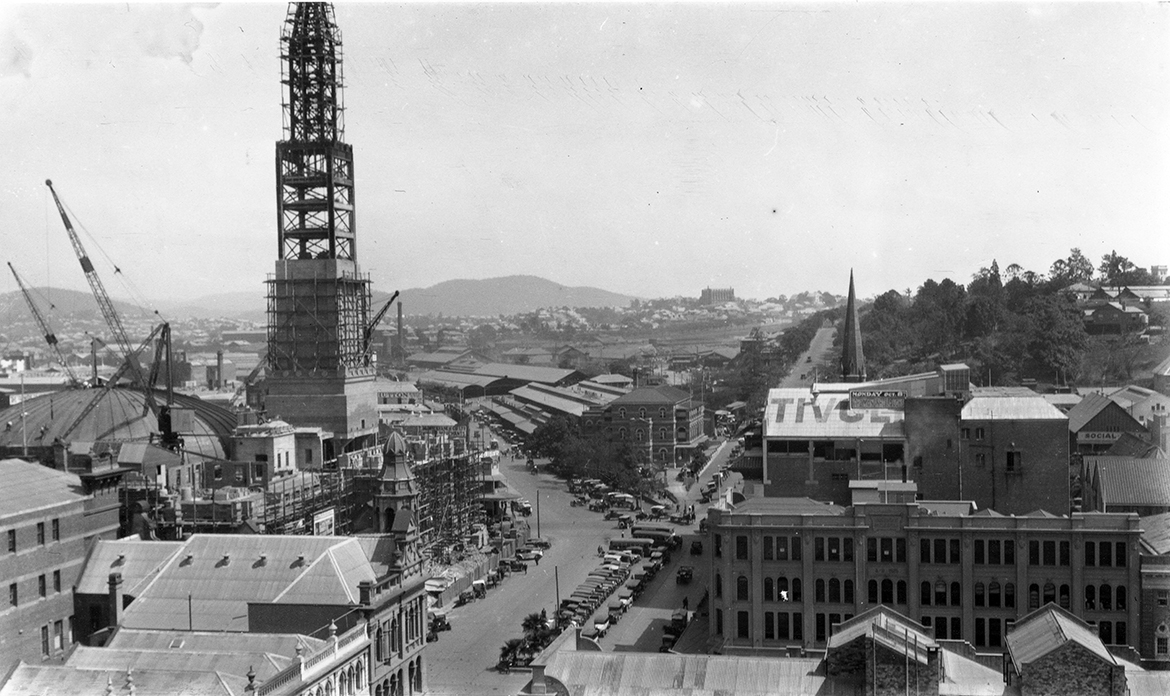
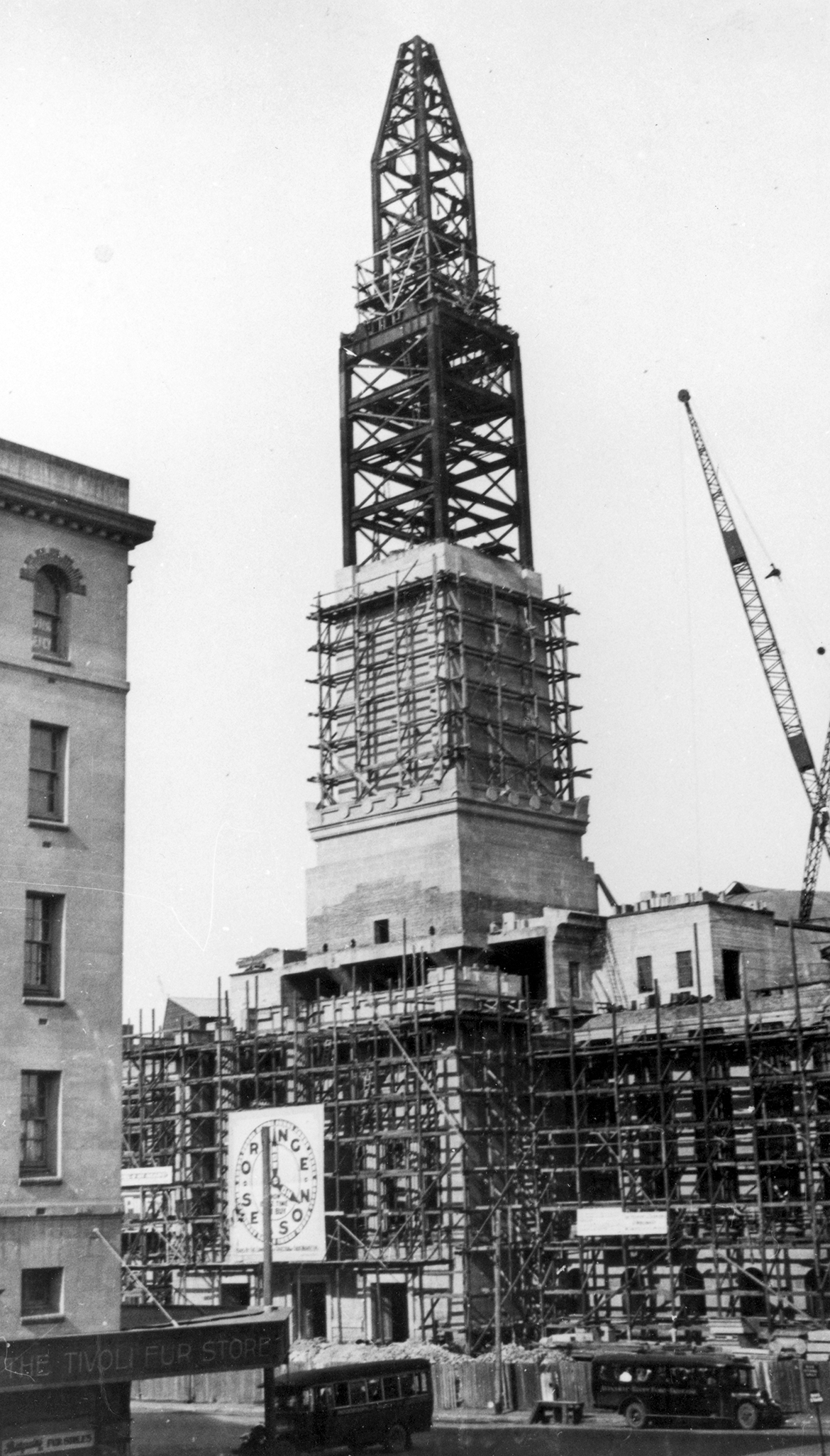
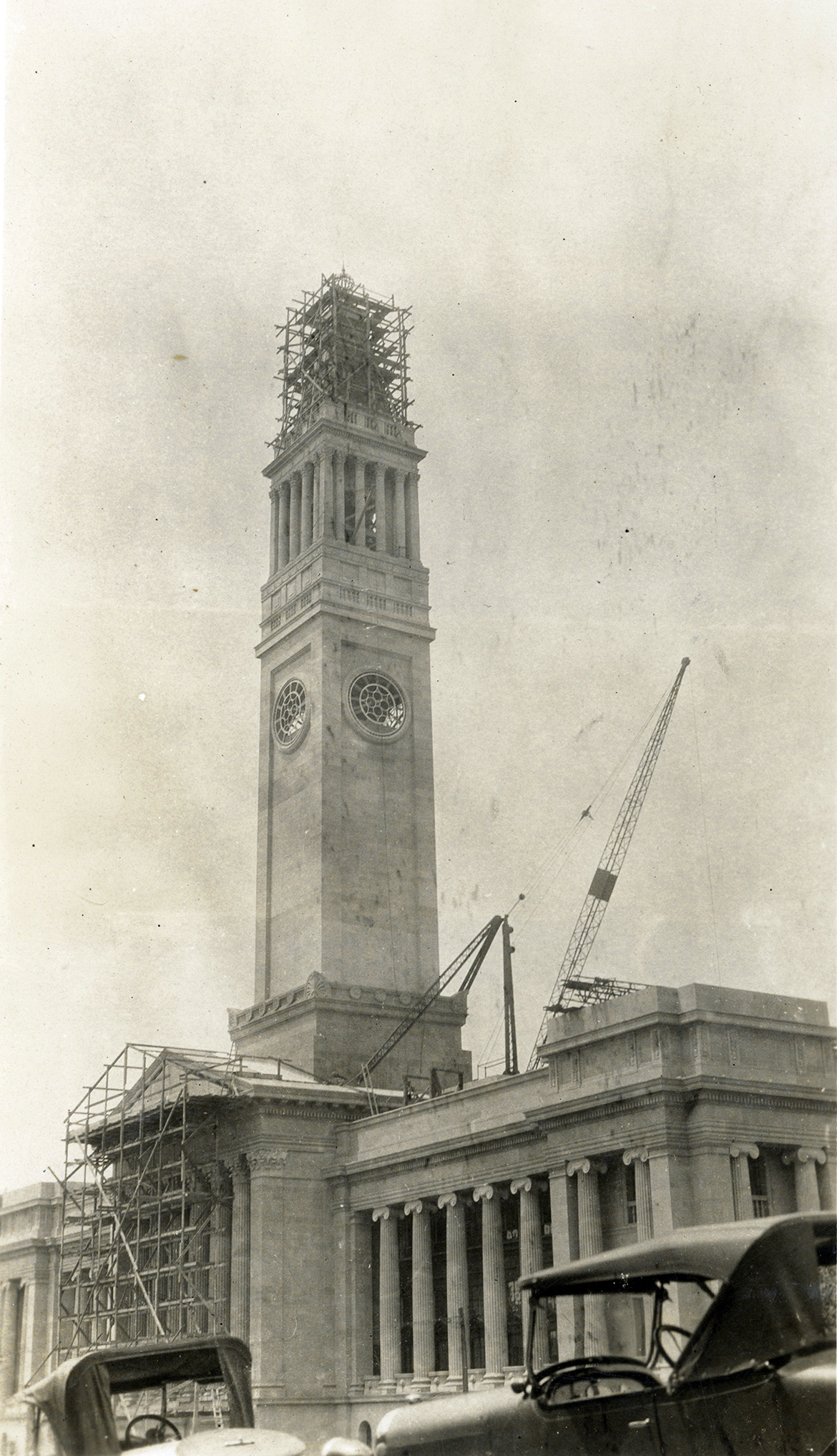
Daphne Mayo working on the City Hall Tympanum

Curatorial extracts, research and supplementary material compiled by Elliott Murray, Senior Digital Marketing Officer, QAGOMA
#QAGOMA

